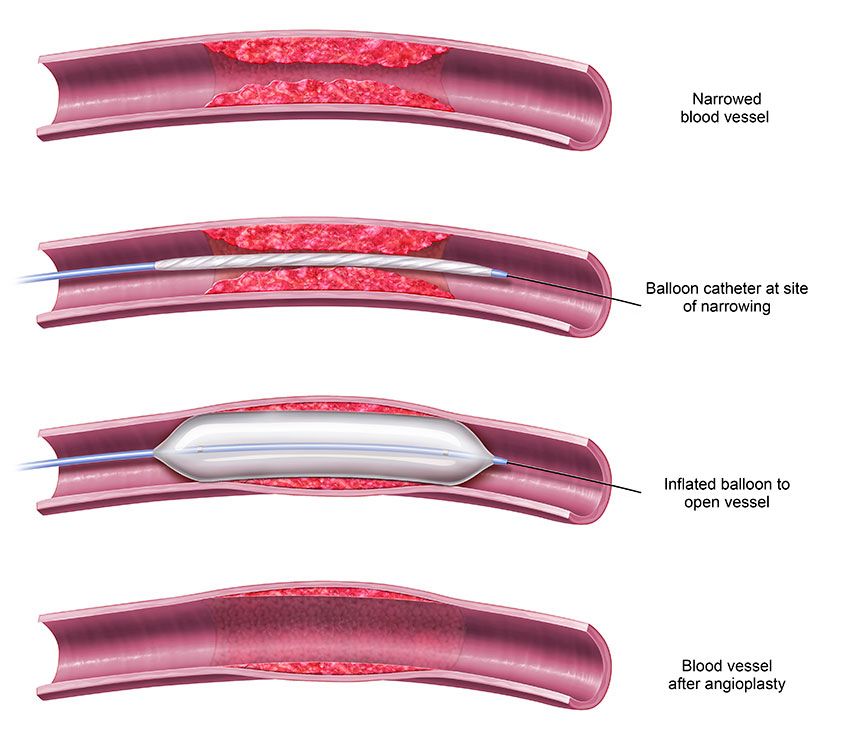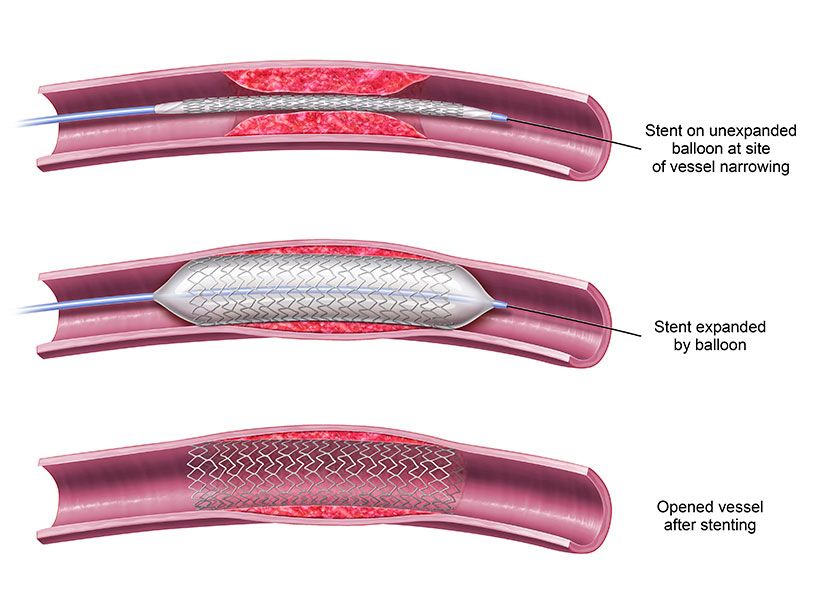If you are a dialysis patient with an AV fistula or graft as your access, over time it is possible that your AV fistula or graft may narrow or clot and require an interventional procedure to improve or restore the blood flow so that you can continue to receive dialysis.
If you are having problems with your access, your nephrologist may decide to refer you to a vascular care center for evaluation. There, the vascular specialist will determine if you need an interventional procedure, such as angioplasty, to ensure you leave the center with a fully functioning access.
What is Angioplasty?

Angioplasty is a minimally invasive procedure during which a small balloon catheter is threaded through your blood vessel to the access. First, your doctor will give you medication to keep you calm and relaxed, and a local anesthetic (numbing medicine) will be injected into the point where access will be obtained to your fistula or graft.
Next, your physician will insert a balloon catheter, guided by fluoroscopy, a type of continuous x-ray imaging, to reach the portion of the access where the blockage or narrowing is located. Once it reaches that point, the balloon is inflated for a short period of time to reopen the narrowing or blockage. Through x-ray imaging, your physician will determine whether or not the blood flow through the treated area has improved. Once the vessel is opened sufficiently, the catheter is removed and the procedure is complete.
Typically, soon after angioplasty is completed, you can go home. Before leaving, your heart rate and blood pressure will be monitored and your access site will be checked for bleeding or swelling. You will be instructed to avoid lifting heavy objects and refrain from rigorous exercise for a day. Pain medication and blood thinners may be prescribed for you, so make sure to follow directions from your physician.
Benefits of Angioplasty
Treating your dysfunctional access with angioplasty has many benefits:
- Blood flow to your AV fistula or graft is restored
- Minimal or no disruption in your normal dialysis schedule
- No surgery is required – a small skin puncture is made which will not require stitches
- General anesthesia is not required
- No hospital stay is involved
- Return to daily activities shortly after your procedure
During any procedure where the skin is penetrated, there is a slight risk of infection. Major complications are uncommon with angioplasty. Be sure to speak with your physician to learn about all benefits and risks related to these procedures.
In some patients, treatment with angioplasty is not sufficient and a stent is needed to aid in keeping the vessel open.
What is a Stent?

A stent is a small, wire mesh tube that expands, holding open the vessel to restore adequate blood flow through the AV fistula or graft. Stents are inserted through a catheter and remain permanently in place. Stents are used when angioplasty alone is not sufficient to keep the access open.
How We Can Help You
Our physicians are specialists in dialysis access management. Our interventional radiologists, nephrologists, and vascular surgeons use minimally invasive procedures such as angioplasty and, if necessary, stent placement to restore blood flow and eliminate blockages of hemodialysis accesses, allowing you to continue your scheduled dialysis treatments and restore normal function to your access.
At Azura Vascular Care, we work every day to deliver far more than our patients expect. We bring our full range of medical capabilities and service excellence to every patient, every visit at each of our centers nationwide.
To learn more about a specific medical condition leading to dialysis or general information about dialysis, Fresenius Kidney Care is a complete resource for CKD.
Ready to Speak with a Specialist?
Search for a center or physician in your area and request an appointment online.